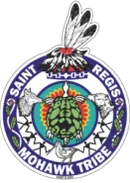-
Community & Family Services
- Care Management Program
- Child Support Enforcement Unit
- Family Support
- HCBS Waiver
- Home Improvement Supplement Program (HIP)
- Homeowner's Assistance Fund
- Individual Residential Alternatives (IRA)
- Individual Supports and Services (ISS) - Housing Subsidy Program
- Office of the Family Advocate
- Three Sisters Program
- Tribal Vocational Rehabilitation (TVR)
- Community Partnership Fund
- Economic Development
- Education
- Environment
- Executive Director's Office
- Finance
- Generations Park
- Grants & Contracts
-
Health Services
- A/CDP Outpatient
- A/CDP Prevention
- Partridge House (Inpatient)
- Ronthahiiohsthá:ke Clubhouse
- Business Office
- Centering Pregnancy
- Dental Clinic
- Health Promotion and Planning
- Laboratory
- Let's Get Healthy - Diabetes Center for Excellence
- Medical Clinic
- Mental Health - Kanikonri:ihne (Good Mind Counseling)
- Outreach Chronic Care Nursing
- Pharmacy
- School-Based Health Center
- Home Improvement Supplement Program (HIP)
- Human Resources
- Office for the Aging
- Office of Emergency Management and Safety
- Planning and Infrastructure
- Social Services Division
- Tribal Historic Preservation Office
- Tribal Police

Ambient Indicators
Ambient indicators express the physical and chemical conditions of the water. Temperature, dissolved oxygen, dissolved salts, pH and clarity are all monitored. These indicators help inform general river health, as most aquatic beings can only survive within a range of these conditions. A good example is temperature: as water gets hotter, it can’t hold as much oxygen. Without dissolved oxygen fish cannot breathe and they will have to find cooler areas. Each of these indicators tells a similar connected story about how healthy the water is for all the beings that live in and around it.
Insert Picture: WQ-Monitoring, WQ Output
Nutrients and PIB
Nutrients are chemical compounds that promote plant growth. They occur naturally from decaying plant debris and are essential to healthy river ecosystems. Other sources, such as septic systems, wastewater treatment plants, and manure storage areas can contribute an overabundance of nutrients that disrupt natural cycles. The Water Resource Program monitors nutrient levels to ensure standards are met and develop necessary improvement projects.
Insert picture: N, N-Sample Collection, N-Collected Samples
The same sources of nutrient pollution can also contribute harmful bacteria that can make us sick. In order to monitor for these harmful bacteria, the Water Resources Program samples for Pathogen Indicator Bacteria (PIB) that indicates the presence and number of potentially harmful bacteria in a given sample. The water is not safe for recreation if numbers surpass the EPA’s safe use threshold. The Water Resource Program monitors swimming and recreation areas for these bacteria to prevent illness within the community.
Insert pictures: PIB, PIB-A Sample Collection, PIB-Collected Samples
Swimming Advisories
After large rain events, the chances are higher for PIB in the water as non-point source runoff has carried these contaminants into the water. After the water is sampled, the test takes 24 hours. If the tests results return high numbers of PIB, a swimming advisory will be issued, and no swimming should occur until levels diminish.
Insert Picture: Monitoring Sites
Links:

